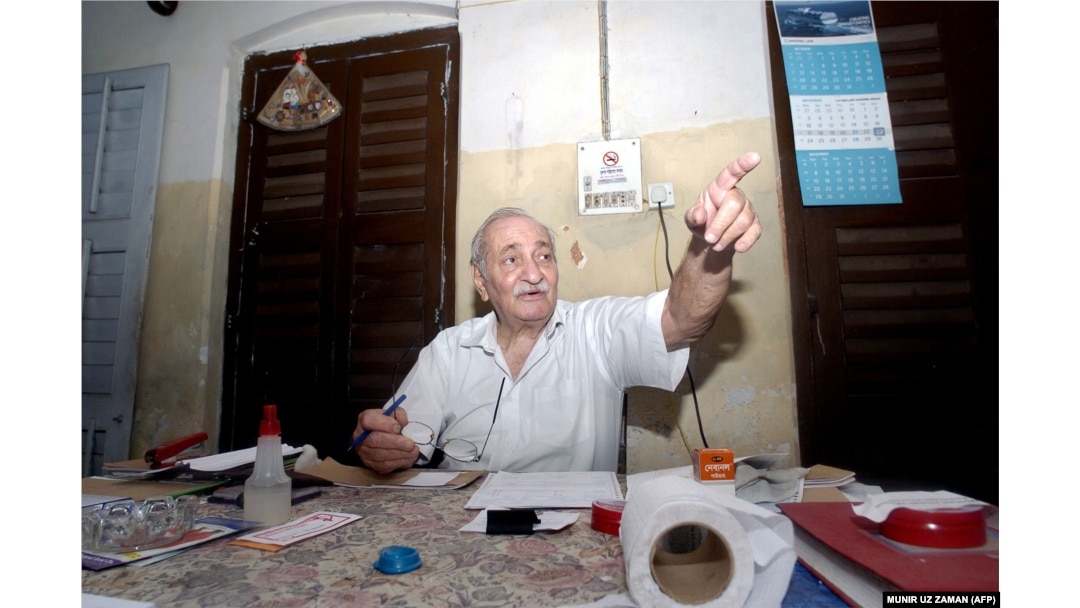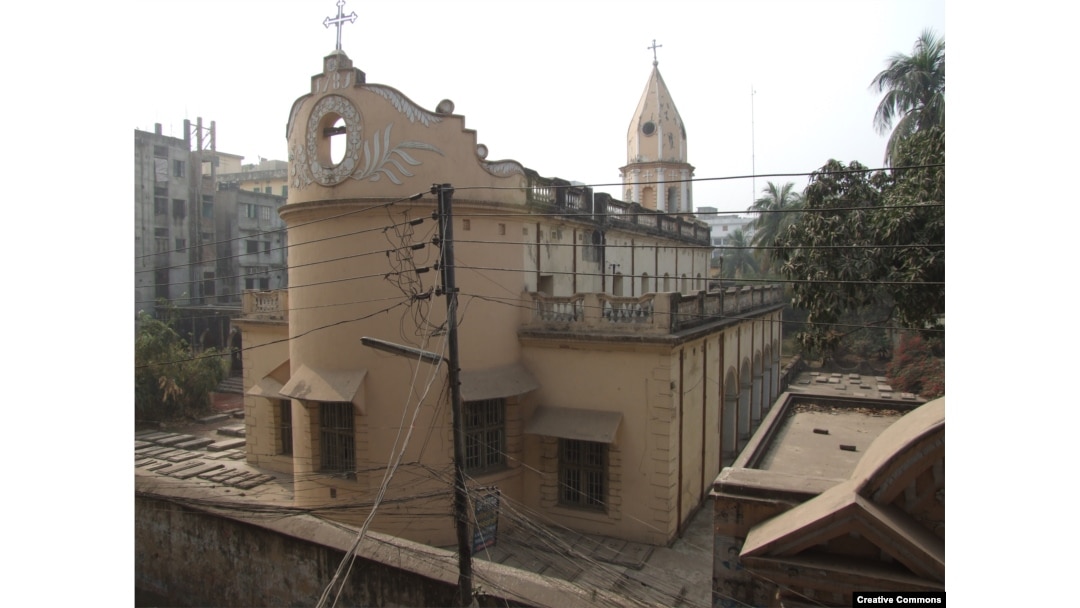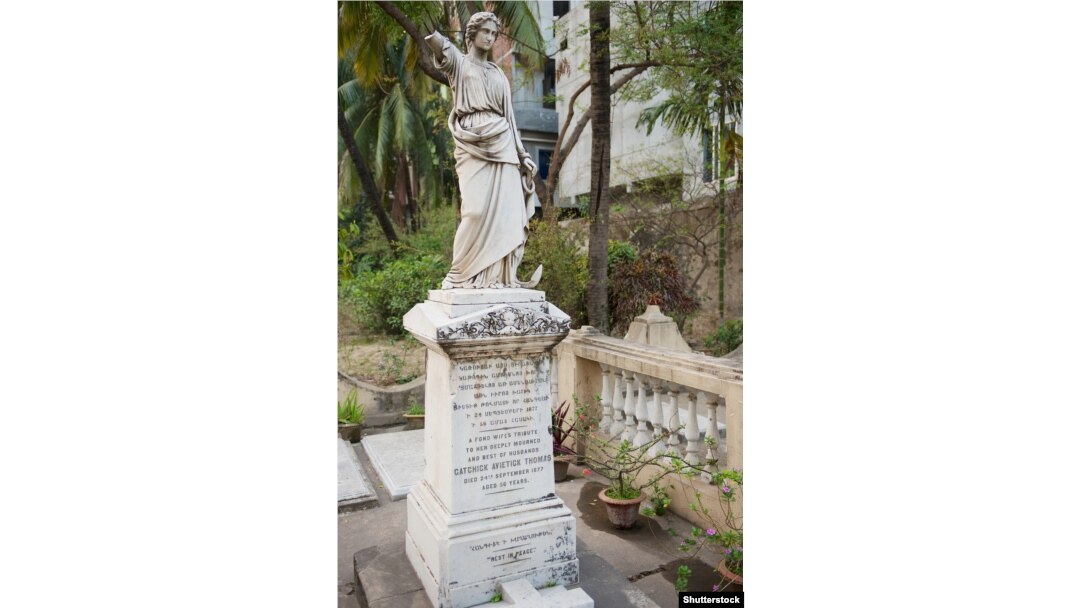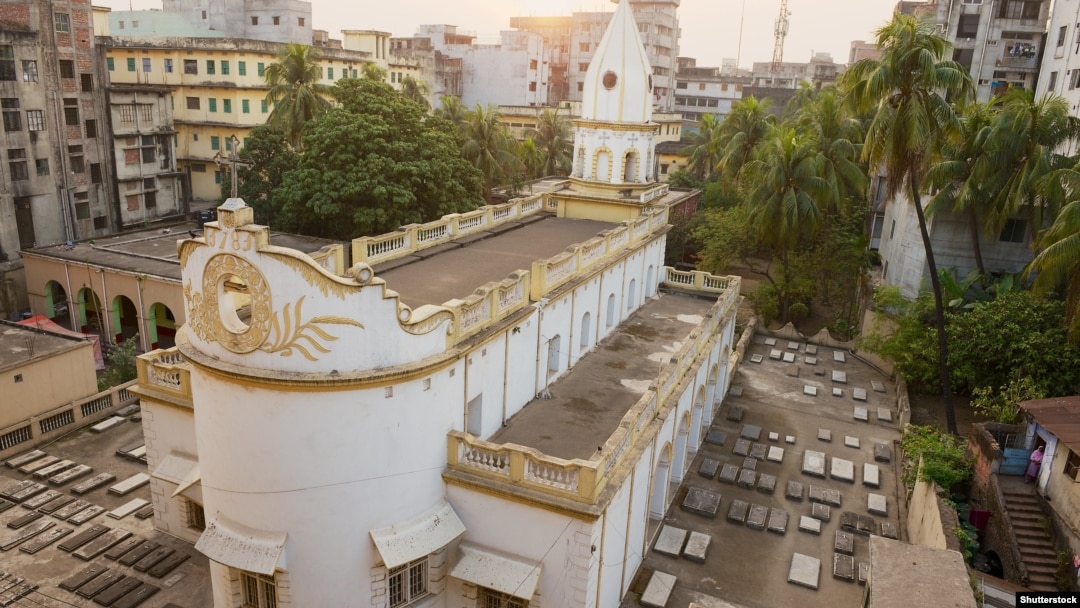How one man's devotion to a 240-year-old church in the heart of Dhaka saved a unique monument in South Asia.

Michael Joseph Martin (pictured in 2008) in the Armenian church in Dhaka
In April, as the coronavirus pandemic dominated the world’s headlines, Michael Martin, famous for being the last of a centuries-old Armenian community living in Bangladesh, passed away not long before his 90th birthday.
His death led many to wonder what would happen to the most prominent reminder of Armenian heritage in Bangladesh -- the historic church he dedicated much of his life to.

Officially known as the Armenian Apostolic Church of the Holy Resurrection, the Armenian Church of Dhaka is located on a narrow lane in the heart of the Bangladeshi capital.
Armenians first settled in Dhaka in the early 1700s. Many of the settlers had been subjects of the Persian Empire, so were able to assimilate to life under the Persian-speaking Mughal rulers of the region.

A tombstone in Armenian and English from 1877 on the church grounds carries a tribute from “a fond wife” to her “best of husbands.”
Armenians in Dhaka were known as skilled businesspeople who dealt in jute -- a stringy plant used to make sack cloth and other goods. They often served as mediators between locals and European traders.
An 1861 painting of Dhaka
In the early 1800s, 126 Armenians lived in Dhaka, in a suburb named Armanitola, but the small population dwindled rapidly as economic conditions deteriorated.
A crew making renovations to the church in the 1930s.
With Armenians nearly gone from Dhaka by the 1980s, the church began to fall into ruin.
Veronica and Michael Martin
But in 1986 Michael Martin, one of just a handful of ethnic Armenians remaining in Dhaka, and his wife, Veronica, became guardians of the church. Veronica died in 2005.
Repairs being made to the church by a work crew organized by Michael Martin.
Martin wrote that when they took over the property it was "covered with garbage and needed immediate attention."
The church's interior
The couple and their three daughters also faced intense hostility from some locals, who Martin said threatened "my life along with my family…. They used to scare us by hanging voodoo stuff from the trees and burying things in front of the house. God always protected us from the evil."
Martin poses in front of the freshly repainted church in 2008.
After decades spent repairing and guarding the church -- on at least one occasion by threatening to use the rifle he kept in his residence -- Michael Martin suffered a stroke in 2014 and relocated to Canada. But not before passing guardianship of the church onto someone he trusted.
An entrance to the church in Dhaka’s Armanitola suburb, which has a reputation for being a tough part of the city
In 2010, Los Angeles-based businessman Armen Arslanian was on a work trip to Dhaka and first heard about the Armenian church. After meeting with Martin, the two became close friends. After his 2014 stroke, Arslanian told RFE/RL that Martin took him aside and said, “Armen, you know now it’s you [who has to protect the church]. I have to leave.”
Tombstones stand in a cemetery on the grounds of the church.
Arslanian says he was taken aback at the prospect of preserving a church on the other side of the world: “I said I’m not that religious so I know nothing about this and I don’t live here.”
Dhaka locals lining up for food being handed out at the Armenian Church in 2020.
But after Martin told the jet-setting Arslanian that his taking over the guardianship of the church was all part of God’s plan, Arslanian laughs that Martin "was putting it in such a way that I’m thinking, 'My God, he’s probably right.' I mean, what was I doing in Dhaka right at that time? I was born in Argentina. I’m living in [Los Angeles]..."
An Orthodox Christmas service being held at the church in January 2021.
Under Arslanian’s wardenship, the Armenian church now has "a very loyal" Hindu family living full-time on the premises. Arslanian has also founded a trust to look after the church "not for the next 50 years, but for the next 200 years."
Russia’s ambassador to Bangladesh (left) holds Martin’s rifle as he poses for a photo with the couple.
Arslanian says the church was in "complete disarray" when Martin took over wardenship in the 1980s, and recalls a story about the late caretaker’s response when a local Muslim gang vowed to kill him. "He said, 'OK, fine. I have eight bullets here [for my rifle] so I know that I will die, but eight of you will come with me.'"
A plaque shows the date on which the 240-year-old church was founded.
A post on a website of the Armenian church said after Martin’s death:
Mr. Martin was instrumental in maintaining the survival of the Armenian church in Dhaka. Without the many personal sacrifices and complete devotion to the church, the premises and the history of the Armenians in Dhaka would not have survived today. He and his family spearheaded what can only be described as a monumental effort to preserve our beautiful church, and it is something that will never be forgotten.


